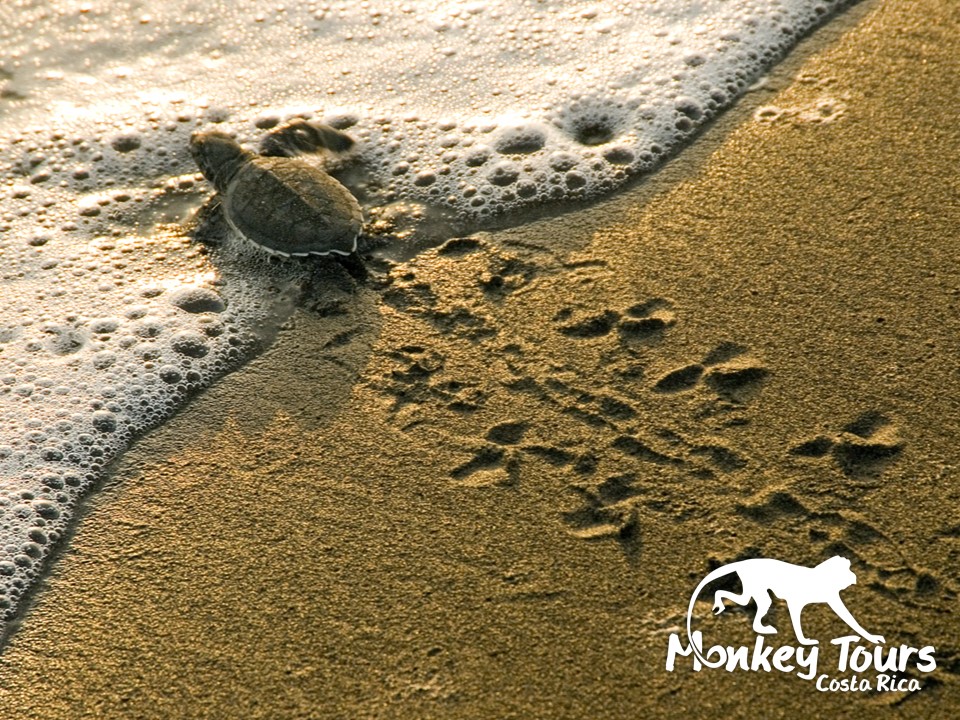The Olive Ridley Sea Turtle of Costa Rica
Olive Ridley Sea Turtles are the most abundant sea turtles of the ocean in terms of population. They can be found along many coasts all over the planet.
Distribution
The Olive Ridley is located for the most part in the regions of the Pacific and Indian Oceans. It inhabits oceans, beaches, mangrove swamps, lagoons and coral reefs. In Costa Rica, the Olive Ridley Sea Turtle is found in Playa Tortuga, Playa Ostional, Playa Nancite, Marino Ballena National Park, Marino Las Baulas National Park and Santa Rosa National Park.
Mating & Reproduction
One of the most prominent features of Olive Ridley Sea Turtles is their coordinated nesting in large groups. Olive Ridley arribadas (group nesting) happen about four times in the year, and hundreds of thousands of turtles emerge at one time to lay their eggs on shore.
Mating occurs both near the nesting sites and further out at sea. The migrating assemblies of Olive Ridleys move from their feeding grounds to their nesting sites, and they most likely mate along the way. Other than mating, Olive Ridley Turtles do not often congregate.
Behavior
Olive Ridley Turles are primarily carnivorous, but they occasionally eat seaweed and algae. There main diet consists of lobsters, crabs, jellyfish, sipunclid worms, crabs, shrimp, snails, sea urchins, bryozoans, bivalves and tunicates. The young Olive Ridleys that try their best to make it to the sea are preyed upon by coatis, snakes, crabs and others before they get a chance to taste the salty brine. As adults they are subject to predation by sharks, killer whales and saltwater crocodiles.
Miscellaneous Info
Olive Ridleys are in the highest numbers of Sea Turtles on the planet, but they are often exploited by people for a number of reasons. Their eggs are taken and treated as a delicacy in most parts of the world. Their meat, carapace and hides are also taken by people for food, bait, oil and leather. People are considered the biggest threat of any predator for Olive Ridley Turtles.
Where to see it in Costa Rica: Playa Tortuga, Playa Ostional, Playa Nancite, Marino Ballena National Park, Marino Las Baulas National Park, Santa Rosa National Park
Diet: lobsters, crabs, jellyfish, sipunculid worms, crabs, shrimp, snails, sea urchins, bryozoans, bivalves, tunicates
Migration Pattern: north to south for synchronized nesting
Habitat: ocean, beach, mangrove swamp, lagoons, coral reefs
Size: length=60-70 cm weight=25-46 kg
Species: Lepidochelys olivacea

